Pharmacovigilance is essential for understanding and improving a product’s safety profile both before and after it enters the market. This intricate and highly regulated process demands the swift and accurate collection, management, and processing of large, fluctuating volumes of product safety data. Companies, pharmacovigilance program staff, and regulatory authorities are responsible for ensuring that pharmacovigilance operations are compliant, safety data is reliable, and a program’s workflow is efficient.
The diverse stakeholders responsible for a pharmacovigilance program rely on access to clear and meaningful operational data to understand that program’s health and improve its function. Given how crucial pharmacovigilance data is, one might expect operational data to be accessible on demand to the stakeholders who need it. In reality, the challenges of accessing and interpreting operational data often constrain pharmacovigilance oversight. Many overseers of the pharmacovigilance programs have difficulty accessing operational data at all. Even when operational data is available, it may be confusing, irrelevant or out of date.
The reasons for inaccessible operational data are multifactorial, but effective solutions have been developed. Platforms designed specifically for the collection and communication of operational pharmacovigilance data are breaking down long-standing barriers to real-time pharmacovigilance oversight, and finally offering diverse stakeholders the information they need to ensure the health and efficacy of pharmacovigilance programs.
These platforms, which include UBC’s Tableau Data Analytics Platform, achieve more effective pharmacovigilance oversight by resolving four long-standing challenges with pharmacovigilance data infrastructure and management. They include (1) the dispersal of relevant pharmacovigilance operational data across databases and data trackers; (2) challenges with accessing operational data stored in product safety databases; (3) challenges with tailoring operational data to specific pharmacovigilance programs; and (4) the complexity of synthesizing raw operational data into personalized, actionable insights.
Centralizing dispersed operational data
Unlike the systems used to centralize and communicate product safety data, which are dictated by pharmacovigilance regulatory requirements and mostly uniform between programs, systems to collect and communicate operational pharmacovigilance data are more heterogeneous. Some of this operational data may be found within the safety database for a product – such as how many reports of adverse events have been received, where they originated from, and how processing timelines are impacted. Other operational data, such as pharmacovigilance quality control metrics and medical review and/or Sponsor comments, may be stored independently of the central safety database, creating significant barriers to comprehensive oversight. This often leaves stakeholders without a comprehensive view of relevant operational data.
To address challenges with operational data dispersal, platforms designed for pharmacovigilance oversight must proactively centralize all relevant operational pharmacovigilance data. Centralizing information within one database is important because it streamlines the process of data extraction, and reduces the risk that information will become unlinked, out-of-date or inconsistently up-to-date.
Such a platform must be capable of extracting and filtering relevant operational data from a company’s safety database, while also allowing for the input of additional information specific to the pharmacovigilance process, such as regulatory reporting requirements and real-time quality control and medical review findings. To accomplish this, the UBC Tableau Data Analytics platform provides the user with a centralized access and oversight to the various operational data that would otherwise be tracked via other methods or even in locations outside of the database (i.e. due diligence activities or regulatory or partner submissions).
To gain a more dynamic view of the quality of the program, quality control findings can be logged directly into the Tableau Data platform to allow for further analysis. For UBC’s Tableau Data Analytics, directly entered data includes quality control information tracking the accuracy and completeness of case reports. As a result, all information relevant to pharmacovigilance oversight is centralized within a single platform, and can be accessed and analyzed through that platform.
Enabling on-demand, real-time data access
Even when operational data is centralized within a safety database, users may face challenges accessing it. Operational pharmacovigilance data is primarily derived from safety databases, such as Argus, that have not been specifically designed for the purpose of pharmacovigilance process oversight. Instead, these safety databases are intended for the management and reporting of adverse events related to a company’s medical product and must prioritize the fidelity and security of the sensitive health data they contain. As a result, access to the data in these databases is often limited. For example, companies may have “read only” access, or even no direct access to their safety database. Moreover, while these databases may contain operational data, they may not be separated from patient safety data. And, in some cases, operational data needs to be derived from patient safety data. For instance, manual data export and analysis may be required to assess case volumes for a specific region if a safety database includes the region associated with each case, but doesn’t include a regional summary of case volumes.

Platforms that extract only operational data from safety databases allow on-demand, real-time access without significant data privacy concerns
This means that extracting operational data from a safety database can be technically challenging and limited to individuals who have been approved to view sensitive health information. The technical difficulty of data extraction, combined with restricted data access, can create insurmountable barriers to operational data access directly through safety databases. Resolving this challenge requires implementing platforms that extract only operational data from safety databases, which can be accessed without significant data privacy concerns. With platforms such as UBC’s Tableau Data Analytics, operational data extracted from safety databases can be accessed on demand, from any device, and by diverse stakeholders that use operational pharmacovigilance data in decision-making.
Personalizing data analytics to user goals
When operational data is accessible and available in real time, the users and uses of operational data become more diverse. Understanding who will want access to operational data and how they will want to use that data becomes crucial to designing a platform that is meaningful to individual users.
To address this challenge, UBC employs tailored dashboards through which operational data is shared. These dashboards are custom-built for each client to align with individual program needs and workflows. Beyond this initial configuration, they offer real-time customization, empowering users to dynamically filter their views by various parameters. This allows for a deeply “honed-in” level of insight, enabling filtering by aspects such as case type, country, source, study, region, initial or follow-up versions, and seriousness. A crucial aspect of this customization is the tailored frequency of data updates, which can range from every 30 minutes to a few hours, depending on the project’s volume and client needs, ensuring data relevance and responsiveness.

Tailored dashboards are custom-built for each client to align with individual program needs and workflows
Ultimately, every layer of data customization and filtering should be designed to accelerate a user’s ability to derive actionable insights from operational data by anticipating the type of data that users might need to inform specific pharmacovigilance oversight objectives. The time to operational insights is further accelerated by the implementation of real-time data filtering and customization within each dashboard, allowing users to focus on the most relevant and actionable data.
Leveraging data visualization for clear communication
Pharmacovigilance stakeholders can only effectively utilize operational data if they comprehend it. Therefore, clear and intuitive data analytics visualizations are essential to ensure relevant data is not only accessible, but also effectively communicated and understood. This necessitates a platform capable of transforming data into user-friendly graphs and charts. For example, UBC’s Tableau Data Analytics’ program summary dashboard presents regional case volumes on a map rather than in a table. Users can customize these charts and visuals to quickly and efficiently convey specific findings, thereby saving time and fostering alignment among the numerous pharmacovigilance stakeholders.
Increasingly, clear pharmacovigilance oversight is not a “nice to have.” It is critical to sustaining and communicating the health of a pharmacovigilance program. Stakeholders of pharmacovigilance programs must demand platforms such as UBC’s Tableau Data Analytics that enable early, relevant and reliable insights into pharmacovigilance operations.
To learn more about the capabilities of UBC’s Tableau Data Analytics in more detail, read our case study HERE.
Related reading:
Read our White Paper: Best practices for pharmacovigilance safety data management
About UBC
United BioSource LLC (UBC) is the leading provider of evidence development solutions with expertise in uniting evidence and access. UBC helps biopharma mitigate risk, address product hurdles, and demonstrate safety, efficacy, and value under real-world conditions. UBC leads the market in providing integrated, comprehensive clinical, safety, and commercialization services and is uniquely positioned to seamlessly integrate best-in-class services throughout the lifecycle of a product.
About the Authors

Poonam Pathak, Team Manager, Global Case Processing
Poonam Pathak has been part Poonam Pathak has been part of the pharmacovigilance (PV) field since 2014, demonstrating expertise in all facets of clinical trial and post-marketing for pharmaceutical products, tobacco products, vaccines, and medical devices. Her experience encompasses leading and participating in case processing activities, literature screening and review, data migration, as well as the preparation and development of aggregate reports.
As a Global Manager at UBC, Ms. Pathak oversees PV safety monitoring and risk management for a team of PV professionals (including safety scientists and safety data associates) to develop safety reporting and RMPs.

Erin Williamson, Associate Director, Global Case Processing
Erin Williamson serves as Associate Director, Global Case Processing. In this role, Erin is responsible for oversight and execution of global Pharmacovigilance (PV) case processing activities contracted by UBC’s clients. This includes responsibility for and oversight of deliverables which ensure regulatory compliance, data quality, and team productivity.
Erin has over 20 years of industry experience in clinical and drug safety at ICON, Wyeth, Pfizer and UBC. She has a broad pharmacovigilance experience for a wide range of drugs, biologics, vaccines and devices, both in clinical development and post-marketing, including case processing and submission activities, signal management activities and aggregate safety reports. Erin Williamson has a BS in Biology from LaSalle University.







